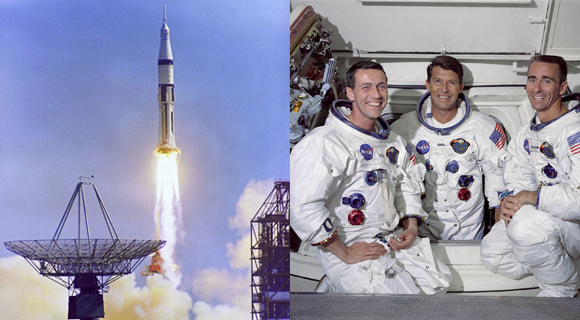On this day, 11th October: NASA launched Apollo 7 - 1968

Apollo 7, launched on October 11, 1968, was a critical milestone in NASA's journey to the moon. It marked the first successful crewed mission in the Apollo program, designed to test the command and service modules after the devastating Apollo 1 fire. During the 11-day mission, astronauts Wally Schirra, Donn Eisele, and Walter Cunningham orbited Earth 163 times, performing various tests on spacecraft systems, communications, and re-entry procedures. The crew demonstrated the spacecraft's ability to support human life in space, proving crucial for future lunar missions.
Apollo 7's achievements solidified NASA’s ability to carry out long-duration space missions, setting the stage for Apollo 8's journey around the moon and ultimately the historic Apollo 11 moon landing in 1969. Despite minor issues, such as crew complaints and tension with mission control, the mission was hailed as a resounding success and was key in revitalizing the U.S. space program after earlier setbacks.
The mission lasted 11 days, with astronauts Wally Schirra, Donn Eisele, and Walter Cunningham aboard. Its primary objective was to demonstrate the functionality of the command and service module in low Earth orbit, including life support, propulsion, and communication systems. The mission was highly successful, completing all planned objectives and setting the stage for subsequent missions, ultimately leading to the moon landing in 1969.
Apollo 7’s success helped restore confidence in the space program and NASA's ability to safely conduct long-duration space flights.





